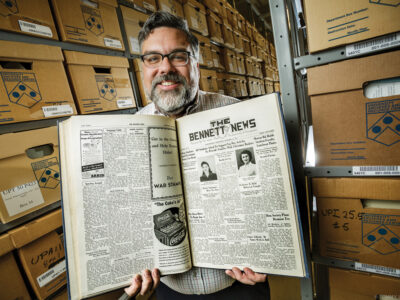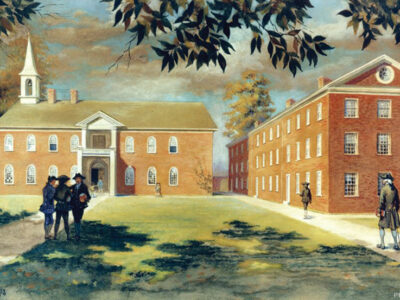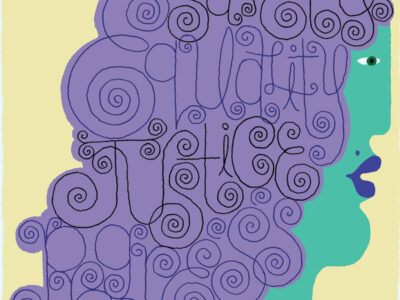
Alumni talk about the struggles to establish resources for African Americans, women, and sexual minorities on campus.
By John Prendergast | Photography by Candace diCarlo
Sidebar | Penn’s International Students: “Their Homes Encircle the Globe”
With a few exceptions—largely involving condescending or carping comment about the presence of women on campus, or bragging over Penn’s geographic diversity (see sidebar)—the Gazette took scant notice of the non-white, non-male, non-heterosexual student population from its founding in 1902 up through the early 1960s.
Women led the way in coverage, with reports on the coming of co-education to Wharton—the last holdout among Penn’s schools—in 1954, and the magazine’s recognition that “The Co-Ed Is Here to Stay” in 1964. But the real turning point came—on campus as in the larger society—in the late 1960s, when the magazine began to publish extensive reports on student protests over the Vietnam War, civil rights, and the treatment of women and, later, sexual minorities—accompanied by horrified (and occasionally cheering) comment from alumni in the “Letters” section. Prominent among the stories were articles concerning the establishment of the Afro-American Studies Program and the W.E.B. DuBois College House in 1972; the founding of the Penn Women’s Center the following year; and, a decade later, a pioneering effort at the University to provide counseling for gay and lesbian students.
We decided to take a look at these events from the perspective of the present through conversations with three knowledgeable alumni: Wayne Glasker C’80 Gr’94, a DuBois College House resident throughout his undergraduate years and the author of a recent book tracing the history of black student activism at Penn; Carol Tracy CGS’76, the leader of the 1973 sit-in that led to the women’s center, later a director of the center, and currently director of the Women’s Law Project in Philadelphia; and Robert Schoenberg SW’68 Gr’89, who for 20 years has directed what is now the Lesbian Gay Bisexual Transgender, or LGBT, Center at Penn.
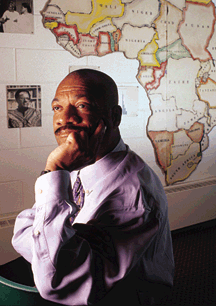
Examining Separatism vs. Integration
“They say that for students a generation is four years,” Wayne Glasker offers by way of explanation for the near total lack of awareness on campus by the mid-1970s of the turbulent years 1968-1972, when black presence on Penn’s campus tripled.
Glasker, an associate professor of history and director of the African American Studies Program at Rutgers University, Camden, is author of Black Students in the Ivory Tower: African American Student Activism at the University of Pennsylvania, 1967-1990. The heart of the book deals with those critical four years, which besides the jump in admissions also saw the controversial birth of DuBois College House and the initiation of the Afro-American Studies Program at Penn.
Glasker’s reason for writing the book was “an interest in black nationalism and an attempt to understand the paradox between black nationalism and ideas about integration.” He focused on Penn because “I thought this is something I knew well and could write about in an authoritative way.”
He begins his history with the McGill Report, a 1967 document aimed at increasing diversity at Penn that called for “10 percent of the incoming class [to] be what was called special admissions, with goals for number of people from socioeconomically disadvantaged backgrounds, and athletes, and also the children of alumni and faculty and staff.”
At the time, there were about 40 black students at Penn, “and we go from [that] to 80 to more than 150 in the span of about three years,” Glasker says. “The goal was to have excellence with diversity, but it proved by traditional standards to be difficult to do. On average, the SAT scores of minority students were about 200 points lower than the average for white students, and some people perceived that as a dilution of quality—underqualified minority students were being admitted at the expense of better qualified white students.”
This “poisonous perception” had a negative impact on the minority students, who felt themselves to be “under this cloud of illegitimacy,” he adds. This in turn generated “an equal and opposite reaction, which is that the minority students feel alienated, and if people feel alienated and unwelcome then they will voluntarily withdraw.”
To some extent, this “withdrawal” was similar to other “affinity” groups, says Glasker—though it was often misinterpreted. “People are going to gravitate together on the basis of something they share in common, whether it’s ethnicity or gender or whether they like the same music or the same literature. That does not mean it’s the only thing they do. People can both have time for their affinity groups andparticipate in the larger campus life. But the perception was that people were simply withdrawing, and that’s all they were doing.”
On another level, though, the situation of black students was special and their alienation more profound—particularly when tensions mounted between Penn and West Philadelphia residents as several city blocks were razed to construct the high-rises and, further north, the University City Science Center. The displacement of the mostly black residents and reports of military research being conducted at the Center prompted a sit-in in 1969.
In the aftermath of the sit-in, Glasker says, the University further stepped up black admissions and also began to draw more students from Philadelphia’s inner-city public high schools. “There had always been some African American students at the University,” he explains, “but they had usually come from middle-class or even elite backgrounds.” Some students from the new pool of admissions “were not as well prepared” academically. Many had also never been in a mostly white environment before. “So for black students from inner-city public high schools it was a double shock,” he says.
Students’ comparative radicalism was also affected by forces in the larger society, he adds. “I think what you get on the Penn campus is a very muted echo of what was happening” everywhere, he says. Martin Luther King was assassinated in 1968, which “had an impact on black students on the campus, on everyone on campus.” In Philadelphia, these were the years of Frank Rizzo, a racially polarizing figure both as chief of police and later mayor. There was a Black Panther movement in the city, which was raided in 1970 “in a sensational event to the wider community.”
The May 1970 issue of the Gazette represents a kind of high-water mark for black student dissatisfaction. The issue in the cover story, “STRIKE!” was the invasion of Cambodia, but other stories focus on campus battles: a report on the resignation of an African American associate dean over the funding for and content of a special advising program for black freshmen, which the University viewed as promoting separatism; a story detailing a series of destructive incidents, including smashed windows at the bookstore, bomb threats, and arson fires in Houston and College Halls (for which the same associate dean was arrested and later released); and an article on a proposed two-year school of black studies recommended by an ad hoc Committee on Black Studies of the University Council.
The call for a black-studies program grew out of students’ unhappiness “with what they saw as the omission of any content in the curriculum about the contributions and experience of African Americans,” Glasker says. “That sense of an absence” led first to demands for courses in black history, black literature, and then “eventually, not only a course in black history but a course which is taught by someone who actually is black,” and finally into what form a larger curriculum in the field would take. “Will it be a school, a department, a program?” This battle was fought out over three years and through several committees—“It gets very tangled and confusing,” says Glasker—before it was set up as an interdisciplinary program reporting to the provost. (Renamed the Center for Africana Studies, the program now is part of the School of Arts and Sciences [“Gazetteer,” this issue].)
The debate over DuBois College House occurred along similar lines—and resulted in some surprising generational rifts in the black community. Glasker notes that the local branch of the NAACP threatened to sue the University “for permitting an all-black residence,” which was the initial demand of black student activists. The older generation saw this as a rejection of the integration for which they had fought so long, “but the parent generation never had to actually live with or in the midst of a mostly white community on a fulltime basis,” Glasker says. “Now their children do have that experience and discover that they are not entirely comfortable with that.” For them, rather than equal opportunity, the issue became assimilation, he says. “Some decided that they didn’t like assimilation all that much. They liked their own culture and did not want to give it up and were comfortable living with others like themselves.”
Technically, DuBois was not established as a black residence, but a residential program for “any student of any race who wishes to learn more about African American culture.” Glasker knew one of the handful of white students who have lived in DuBois, Marian Dorn W’79, and interviewed another, Robert Zagerman W’83, for his book.
After 1972, “many of the issues have been addressed in some form, so there isn’t the same need for the tensions and the polarization,” says Glasker, and they quickly faded from campus memory—along with in loco parentis, single-sex dorms, and curfews for women students.
Glasker also writes about the sit-in of 1978, in which the Black Student League occupied the Franklin Building, in part to gain “some independent bargaining power and leverage” for its issues, following the College Hall sit-in, for which the original spark was budgets cuts in athletics and performing arts. Out of this protest came the United Minorities Council (UMC), in which Glasker sees the beginning of a new era of common cause among minorities on campus and a perception of African Americans as “one ethnicity among many.”
“Much of what looks like separation is actually people being bi-cultural, engaging in their own ethnic culture but also participating in the life of the larger campus and the larger society,” Glasker says. In that light, he points to the 1990 election of Miriam Harris C’91 as chair of the Undergraduate Assembly, the first African American to hold the post, as an important milestone.
Of his time at Penn, Glasker says, “I think it was a superb education, and certainly has helped me in the process of upward mobility. I think I owe the job I have now to the fact that I’m a Penn grad, so it certainly has opened the doors of opportunity—which is what it was supposed to do.”
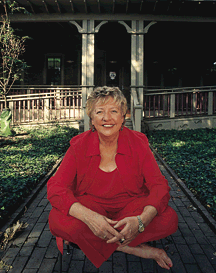
A Secretary Shall Lead Them
The May 1973 Gazette’s report on the sit-in of the previous month that had ended with the promise of a women’s center on Penn’s campus makes the lead organizer, “College for Women sophomore Carol Tracy,” and her cohort seem awfully … nice. The article goes to great lengths to emphasize how well-behaved, reasonable, and focused the women protesters were—and it was all true, sort of.
Sparked by fear over the gang rapes of two student nurses on campus, followed by rage at a suggestion by the University’s chief of public safety that the way women dress could be to blame, the sit-in was indeed exceptional in that organizers came in with a set of concrete, actionable demands to which they stuck over days of tough negotiations, without muddying the waters with other issues or descending into empty rhetoric, Tracy says, pride still clear in her voice some three decades later.
But that had more to do with the experience that Tracy had already gained fighting for better working conditions and greater employment for women on campus, and, earlier, union organizing, than with women’s innately more “civilized” natures, as the article seems to imply.
Tracy grew up in working-class Chester, Pennsylvania, and first came to the University in 1968, working in the city planning department and taking courses at night. There was a group of women at Penn working on employment issues—but it didn’t include support staff. “I said, ‘What about secretaries? You’ve forgotten us,’” Tracy recalls, and joined up with Women for Equal Opportunity at the University of Pennsylvania (WEOUP). “After a while, they were happy to see an activist young woman there.” And she brought to the table organizing skills that the women faculty and administrators lacked—“which, in those days, meant I could run the mimeograph machine,” she says with a laugh, as well as how to get out mailings and handle publicity—while the women faculty mentored her in the ways of the University.
Tracy was elected president of WEOUP, working on affirmative action and bringing several important tenure cases, and meeting regularly with Penn President Martin Meyerson Hon’70. “I was learning the art of negotiation,” she says. Eventually, with the help of a scholarship and some sympathetic administrators—“People were starting to like that a little secretary was leading this effort that included faculty”—she was able to become a full-time student. “Then came this awful event of gang rape on campus,” she says.
As traumatic as such events are today, then fears were stoked even further by the fact that there was little reporting about rape, so rumors ran rampant. Though it may be difficult to imagine, Tracy notes, Women Organized Against Rape (WOAR) was just then forming in Philadelphia and around the country and rape was still shrouded in secrecy and shame. “There were no services for rape victims, the police didn’t investigate, the district attorney’s office paid no attention to what was the second most serious crime, even medical institutions were hostile to victims,” she says. “It was a radical act to have an advocate in the hospital—and Philadelphia was the first to formalize the relationship of advocates in the emergency room, at the old PGH [Philadelphia General Hospital].”
Parallel to WEOUP’s employment-focused efforts, women students had also begun advocating for a women’s studies program at Penn. The student rapes—which were reported in the news media —served as a “flashpoint” for feminists on campus, who called for a meeting with the campus security chief. The initial impetus was “more fear than activism,” but that changed when he “told women not to wear provocative clothing,” says Tracy. “And there was a 16-year old freshman, Rose Weber [CW’75 L’96], who’s now a public-interest lawyer in New York, who said, ‘I can walk down this campus buck naked, and your job is to protect me.’ And the whole meeting—it was like what they call a paradigm shift—thought, ‘Hey, she’s right.’”
A speech by feminist Robin Morgan, “who came and said you have to do something about this,” further galvanized the students. Later that night, there was a meeting in the basement of the Christian Association, “which was then the hotbed of all radical activity.” Talk turned to a sit-in and a number of possible demands were raised, but then, Tracy recalls, the woman who founded WOAR spoke up. “She said, ‘Listen, the issue on the table is rape. Why don’t you stick with that?’
“So, we started planning [the sit-in],” Tracy says. “It was the tail end of all the student activism, and we fortunately learned a lot about the bad things that can happen in a sit-in. We wanted to stay focused. So we talked among ourselves about demands, and they were very concrete.”
They included better lighting on campus, posting of security officers, a female at the department of public safety to work with victims’ issues, bus and escort services, provision of self-defense classes, “and a women’s center to pull all that together,” Tracy says, “and, by the way, we should have women’s studies as well.” At Tracy’s suggestion, the student activists brought in women faculty as well, and worked to craft something that the “entire women’s community could get behind.”
From the beginning, there was general agreement by the University on lighting and other safety-related issues, she recalls. The sticking point was the women’s center, both the question of “What is this thing going to look like?” and how it would be funded.
The sit-in continued while budget issues were negotiated. Late one night, Tracy received word that a woman was urging that the protesters take to the streets with a “cat-o’-nine tails” and hunt down the rapists. “It was dragging on too long,” by then, and the situation was close to getting out of control, Tracy says. She relayed this information to the University VP across the table, “who [until then] thought I was the most radical” member of the group, “and we concluded that discussion with us getting a staffed women’s center.”
Not that every woman on campus saw that as reason for celebration. “There’s an assumption that in the 1970s every woman on campus was a feminist—which was not the case,” Tracy says. Contrasting her own situation to that of the majority of women undergraduates of her time, she notes that she was older—25 when she went to school full-time—and “a lot of young women didn’t want to hear” about issues like rape on campus. “There was much more solidarity” among black students, for example, since there were “so few of them, and there wasn’t nearly as much division in the ranks.”
However, for women with a feminist agenda, “a women’s center was absolutely critical,” she says. By the time of the protest, women were free of many of the restrictions of earlier days, but inequities remained, especially at the graduate and professional school level. For undergraduates, ironically, the demise of sex-segregation—in student organizations, for example—sometimes worked to the detriment of women, Tracy says. While they had held leadership positions in their own organizations, women in leadership fell off after men’s and women’s groups were merged. As director of the women’s center in 1978-85, Tracy developed a program for women students to learn leadership skills.
(Tracy was also the “whistleblower” in the alleged gang rape of a Penn student that took place at Alpha Tau Omega fraternity in 1982, which she believes was grievously mishandled by the University, “tarnishing” its reputation.)
Today, she says, for the most part “overt forms of discrimination in leadership and admissions are gone, and it’s wonderful.” There is a greater female presence, and—from the president on down—more women in leadership and faculty positions, “though still not at the level it should be.”
Another welcome development is the proliferation of women’s studies courses for young women, “and occasionally young men,” with an interest in feminist issues. “That’s part of the refuge of a women’s center and women’s studies program. It was almost impossible in those days to study anything about women. Literature was all the ‘dead white males’; labor-force participation, economic issues—everything was just very male.”
One area in which women still receive inequitable treatment is student athletics, says Tracy, who brought a Title IX complaint against Penn that was settled in 1996. Another troubling issue, “which really hasn’t changed, is the behavior of men in the area of sexual assault,” she adds. “We’ve changed laws and changed public opinion, but it still happens. It’s still happening on that campus.”
Tracy teaches a women’s studies course at Penn, Law and Social Policy on Sexuality and Reproduction, in which she warns students that they will cover some difficult and controversial subjects, “which might bring up some personal issues for them, particularly when I discuss violence against women.” She invites anyone with a problem to come to her and she will make sure they get to the women’s center—and in each class, she says, there have been “one or two kids who have had a very serious assault or violence issue that happened to them while they were at Penn. So it’s still there, and that’s why it’s so critical to have a women’s center.”
Tracy’s history of activism at Penn has helped shape the rest of her career, she says. Besides continuing to work on the issues that occupied her as a student, she emphasizes how the experience confirmed for her the importance of collaboration and the value of being adversarial—but not hostile—during negotiations. “I think that’s why I’ve been successful,” she says. “In negotiations with Penn or the police commissioner, when there are practices that needed to be changed—just put it on the table and [don’t] attack them personally.”
While directing the women’s center, Tracy earned a law degree at Temple University. After leaving the center, she worked as a city solicitor and in private practice, and then ran Mayor Wilson Goode’s Commission on Women for two years before becoming director of the Women’s Law Project in 1990, which she describes as her “dream job.”
Of her experience at “good old Penn,” she says, “It was a time of social activism—we had the Vietnam War and the peace movement, the women’s movement, and the civil rights movement. I think there was an optimism that we could change things. I don’t think we were complaining as much as we were demanding—and being remarkably successful in a lot of the demands.”
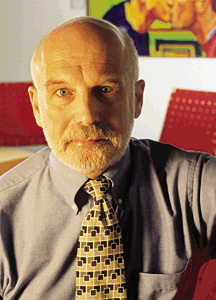
Out of the Closet and Into the Carriage House
In the two decades he has spent working at Penn, Bob Schoenberg has seen the resources devoted to lesbian-gay-bisexual-transgender (LGBT) issues increase from one part-time employee—him—working out of a corner of the advising office to a staff of three full-time employees (headed by him) in a spacious, newly renovated historic building that he says, “is the envy of programs across the country.”
Schoenberg’s longevity and dedication were credited by Vincent Griski W’85, who, with David Goodhand C’85, was the lead donor for the Carriage House renovation, at the ceremony dedicating the space in September [“Gazetteer,” this issue], and Schoenberg was quick to remind current students—and prospective future donors—that 20 years hence, “I’ll still be here.”
The Gazette profiled Schoenberg in November 1983 in a story headlined, “Bob Schoenberg Has an Unusual Advisory Role.” At the time, he was one of the first people officially charged with advising gay and lesbian college students. The assignment had grown out of the harassment of gay and lesbian students the previous year, who “pressed for an administrative response to their general needs as well as to the hostility,” the article notes. “When I was hired in 1982, I was only the second person in the country to be a professional point person for LGBT,” he says.
Schoenberg’s history at the University actually goes back even farther—to the late 1960s, when he was in the master’s program in social work. He says he didn’t take much notice of the gay community on campus—or, indeed, of the campus at all. On the one hand, “I was just in the process of coming out myself,” and on the other, “which is something that hasn’t changed in 30 years,” students in the social work program are only at Penn two days a week, spending the other three in the field.
After receiving his master’s degree, Schoenberg worked with retarded and neurologically impaired children at the Elwyn Institute and St. Chrisopher’s Hospital. “I came back in the [U.S.] Bicentennial year to the doctoral program.” Since receiving his doctorate in 1989, Schoenberg has been working on LGBT issues full-time, while also teaching in the School of Social Work.
Schoenberg credits the current University administration with being “extremely supportive” on those issues. It was President Judith Rodin CW’66 and Provost Robert Barchi M’72 Gr’72, he says, who had the idea of renovating the Carriage House as the new home of the LGBT Center. And the president’s comments when the project was announced in October 2000 [“Gazetteer,” January/February 2001] “were amazing in terms of the level of institutional support and commitment to diversity of all kinds,” he adds. “The idea that we don’t want to separate people because of their differences, but at the same time recognize that people need to have safe places they can go to be with people who are like them.”
(He does, however, mention two administrative battles over the last decade. One was over benefits for same-sex domestic partners, “a stunning victory” when the University approved equal treatment in 1994 and the health system followed six months later; the other over the continued presence of military recruiters on campus despite discrimination on the basis of sexual orientation, which “has been more frustrating and continues to be waged on some level,” he says.)
As for Penn students, while there remain some “who are not very tolerant or accepting of gay students,” Schoenberg says, “most have learned a level of politeness, so that derogatory comments might only be made when they believe there are no gay people in the room—sometimes they are still there and they hear them.” In one incident last year, students sitting outside a fraternity house taunted a couple of gay men, one of whom was wearing a “pink velour sportcoat,” as they passed by. The perpetrators wrote a letter of apology after a complaint was lodged with the Student Conduct Office. Transgender students, especially those whose appearance may seem ambiguous, can still face a “very difficult time” on campus, and there are occasional reports of fag being scrawled on a wall or whiteboard in residence halls.
However, “given that one of the reasons that I was hired in the first place was because of a couple of instances of really severe physical assault, we rarely hear of any kinds of incidents of physical assault anymore,” Schoenberg says. Some “bastions of homophobia are being broken down,” he adds, with several fraternities and sororities and athletic teams including out gay and lesbian members. “Things are definitely better than they were.”
One area that “we continue to struggle around is LGBT students who are also students of color,” he adds, who report experiencing racism in the LGBT community and homophobia in their community of color. Students in this dilemma tend to conceal their sexual orientation, “but it’s a double-edged sword,” says Schoenberg. “Yes, you can hide it, but at what cost to yourself in terms of your real identity? So, we’re working hard to make the campus as accepting as possible of all people [regardless of] race, sexual orientation, or gender identity.”
Asked whether LGBT students arrive on campus more certain of their sexual identities than 20 years ago, Schoenberg says, “I wish I could quantify that. It’s a really fascinating question,” and adds that a part of his doctoral research was designed to address it. In interviews with students at seven Philadelphia-area institutions of higher education, “what I found was that there was a range,” he says. “I think that it’s still the case that students arrive on campus at different places [in their development], but I can’t really minimize the effect of the media [and] Internet.”
In the 1983 article, Schoenberg comments on the lack of role models for gay and lesbian students on television and in the media. That’s less of a problem today, at least in the number of depictions of gays and lesbians on screen. As far as being role models, “I think they fall pretty short,” he says, of characters on shows like Will and Grace, Spin City, or Queer as Folk.
The Internet may have the greater impact, he says. “There’s a way to do research—in an abstract sense and a deeply personal sense—from your bedroom, anonymously. That simply wasn’t available to us 20 years ago.” Prospective students can look at the LGBT Center’s Web site, and send e-mail using only their screen names, if they prefer, “saying, ‘I’m thinking of coming to Penn. What will it be like for me as a questioning student or a gay student or whatever the case happens to be,’” says Schoenberg. After sharing his own perspective, “which is hardly unbiased,” he will generally offer to put the writer in touch with current students “and they can have an e-mail exchange.”
Another difference for current students is “gay-straight alliances, which are a very popular phenomenon in high schools nowadays,” says Schoenberg. Such groups allow students to fight for, say, civil rights for gay people, without “forcing you to identify who you are or why you’re a part of the organization.” More and more students who come to Penn have had experience with these groups. “The idea to somebody who is my age and came out in his early-to-mid-20s that somebody could be 13-14 and part of a group or even out to their parents” is amazing, he says.
In a few cases, parents have even brought their child to the LGBT Center while on a campus visit. One mother wanted her son to go to two places—“to meet the coach of the athletic team he wanted to be on and the LGBT Center, ‘because he’s gay and that’s who he is and we want him to be happy.’ I think that’s much more of a 2002 than a 1982 phenomenon.
“On the one hand, 20 years seems like a lifetime, and on the other, when I think of the difference between that little corner of Houston Hall and where we are now—it’s mindboggling,” he says.
SIDEBAR
Penn’s International Students: “Their Homes Encircle the Globe”
In 1902, the year of the Gazette’s founding, Pennsylvania natives made up the great majority of Penn students, accounting for 1,776 of the total enrollment of 2,517. Even then, however, the University was attentive to its geographic diversity. The very first volume of Old Penn, the Gazette’s precursor, included a report on the organization of a Penn alumni society in Japan, and the November 7, 1908, edition boasted of the students of Old Penn that “their homes encircle the Globe.”
“University Magnet for Foreign Students” was the headline for a March 22, 1922, article featuring a world map showing the 45 countries from which the 251 students had been drawn, including China, Japan, “twenty republics in different parts of the other Americas south of us,” Australia, New Zealand, “British South Africa,” “all parts of Europe,” “India, Siam, the Philippines, Syria, Persia and also from Armenia and Egypt.”
Noting that, due to a lack of English language skills, these students “may not appear to their best advantage,” the article urged readers to imagine themselves as students in a foreign country “and ask yourself whether your talents would shine out very brightly in those student bodies, with only a limited knowledge of the language … If we would think over this it would give us a little deeper sympathy with the difficulties of those who come to study in our midst.”
Three decades later, in “What Our Foreign Students Think of Us,” Iranian graduate student Ahmad Mesbah ASC’64 G’66 turned the tables, reporting on the results of a survey that questioned international students “on such topics as American education, the American way of life, and American foreign policy.”
There were by then about 1,200 students from more than 90 countries at Penn, according to the article. In these years just before U.S. campuses erupted in protest, the respondents found American students “less interested in politics [and] more attracted by sports,” and had mixed views on U.S. foreign policy, generally mirroring Cold War tensions. They felt that their American classmates had friendly attitudes toward them, for the most part, but that they lacked understanding of foreign students, their languages, and cultures.
For many, language was a difficult hurdle, Mesbah noted; even when students have learned English, “People speak too fast for them and use a lot of idioms and slang.” He told a story on himself involving his struggles with the words guy and cop and reported on the case of a German student who was shocked to find a package left for him bearing the word gift—“poison in German.”
The concerns raised above would sound familiar to Shalini Dev Bhutani GEd’86 Gr’94, director of the international students and scholars program in the Office of International Programs (OIP). Overcoming language barriers and strengthening the relationship between international and American students remain at the top of her list of issues.
As of Fall 2002, there are 3,820 international students at Penn, of whom 944 are undergraduates, and they come from about 125 countries. The top five “feeder” schools are China, Korea, India, Canada, and Japan. The Wharton MBA is the most popular graduate degree, while the College attracts the greatest number of undergraduates, with majors that “run the gamut,” she says.
To introduce students to the U.S. and the University, OIP schedules a two-and-a-half day special orientation prior to the regular new student orientation. “The first thing that students need to do is get used to their new cultural environment—new housing, new cultural norms. As classes start, the new academic environment becomes a big issue,” she says.
Both undergraduates and graduate students “would like to see more interaction between American students and international students,” Bhutani says. “Often as I’ve spoken with international students, they seem to identify with other international students.”
One “wildly popular” program aimed at fostering cross-cultural interaction is Talk and Taste, to which international students and students interested in Penn’s study-abroad programs (which are also managed by OIP) are invited to meet and sample
various national cuisines.
Ease with English continues to be an obvious help in acclimating to the U.S. For students from parts of the world, such as East Asia, where English tends to be “a language learned later on in life, it becomes an issue,” Bhutani says. “There are a large number of clubs on Penn’s campus, and I think the international students seek solace within those groups,” she adds. “There is a very strong network” formed at these clubs, although they don’t address the issue of bringing students together across cultures, “so while it offers some solace, it offers perhaps a less than perfect solution.”
To the perennial challenges facing international students, laws passed in the aftermath of September 11, such as the USA Patriot Act of October 2001, have added a new wrinkle. While overall numbers are up by about 350 this year compared to Fall 2001, there were a “record number [of international students] either denied or delayed in the visa process” because of “issues of homeland security,” says Bhutani.
For students in 26 identified countries, mostly in the Middle East, new requirements for visa applicants have been imposed. “It has subjected them to greater scrutiny and lengthier security processing timelines,” she says. In some cases, the students managed to make it to the University in time, others deferred admission until Spring 2003, “and we’ve lost a few students to other countries,” she says.
Bhutani calls on the rest of the Penn community to recognize the unique value that international students bring to the University. While recent events give her words greater urgency, it is the same sentiment expressed by the Gazette writer in 1922—and one that would also ring true to members of other groups, once unwelcome on campus, that have enriched the Penn community (see accompanying article).
“In the fear of ‘foreign’ people that has come out of 9/11, we need to make sure that we remember the contributions that international students make—that we go out of our way to accommodate their needs,” she says. “We at the University have a responsibility to these people who have come here sometimes at tremendous sacrifice on the part of their families. We need to make them feel comfortable, we need to provide resources to them, we need to provide support to them—not necessarily more than we do for other students on campus, but certainly this is a large and very important part of the University.”


